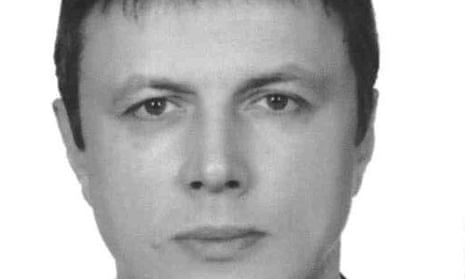In June 2017, the Kremlin aide Oleg Smolenkov and his family flew from Moscow to Tivat, a coastal resort in Montenegro favoured by Russian tourists. He never came back, and his colleagues never heard from him again. A murder inquiry was launched and soon dropped for lack of leads.
That was the last anyone heard of Smolenkov until this week, when Russian media named him as a CIA spy spirited out of Russia by the agency for his own safety. CNN first revealed the existence of a US source inside the Kremlin earlier this week.
It reported that the source had provided Washington with information for years and was instrumental in US intelligence agencies’ conclusion that Russia had interfered in the 2016 presidential election. CNN did not name the agent, citing fears for his life, but Russian media quickly outed Smolenkov as the likely culprit.
There has been no confirmation from either side that Smolenkov is indeed the man in question, but circumstantial evidence appears to fit. The holiday to Montenegro seems to have been cover for a careful US operation to whisk Smolenkov and his family to safety. According to Pobjeda, a Montenegrin newspaper known to have good sources in the country’s security services, the Smolenkov family flew into Tivat on 14 June 2017.
The small coastal airport has various flights from Moscow a day, and the Smolenkovs would have blended into the crowds of Russians thronging the coastal resorts during the busy summer season. Smolenkov, his wife, Antonina, and their three children reportedly slipped out of the country on a yacht from nearby Porto Montenegro a few days later.

According to a local security source, US contacts told the Montenegrins there were some people who had to board a vessel “without any pomp”, but gave no further details. The Montenegrins agreed without asking any questions. Porto Montenegro services a regular flow of super-rich and publicity-shy yacht owners, and is also known as a hub for smuggling activities, so a mysterious departure requiring secrecy did not raise eyebrows.
Russia’s Interfax news agency reported on Friday that several officials had been disciplined for allowing Smolenkov to travel to Montenegro. The destination was blacklisted for Russian government employees after the country accused Moscow of orchestrating a coup attempt there in 2016.
The assumption is that the boat took the Smolenkovs across the Adriatic to Italy, from where they would have been transferred to the US. His trail reappears in June 2018, when according to local property records, Smolenkov and his wife bought a house occupying acres of land on a cul-de-sac called Partridge Lane in Stafford, Virginia, about 40 miles south-west of Washington.
They paid $925,000 for the six-bedroom home under their own names, and then transferred ownership to a trust, the Partridge Joint Revocable Trust, in March this year.
Journalists rushed to the address on Tuesday when Smolenkov’s name was first floated as the potential defector, only to find the house closed and empty. Neighbours confirmed a Russian couple had lived there and said they had left hastily on Monday night, a few hours after CNN’s story broke.

The network said the agent had been withdrawn from Russia in 2017 because of concerns that Donald Trump could give his identity away, a claim the US secretary of state, Mike Pompeo, denounced as egregious.
Russian authorities have not denied that Smolenkov could have been a CIA source, but have played down his importance and access. Putin’s spokesman, Dmitry Peskov, confirmed that he had worked inside the presidential administration but said he had been fired and had no access to Putin. He called the CNN report “pulp fiction”. The foreign ministry spokeswoman, Maria Zakharova, dismissed it as “classic propaganda”.
Born in the city of Ivanovo, north-east of Moscow, in 1969, Smolenkov joined the foreign ministry soon after graduating and worked in a series of uninspiring jobs in its monetary and financial department. He was posted to Russia’s embassy in Washington some time in the 2000s, and worked under the then ambassador, Yuri Ushakov.
Ushakov became Putin’s top foreign policy adviser in 2012, and Smolenkov moved to work in Ushakov’s offices in the presidential administration building on Staraya Square in Moscow.
A Vedomosti newspaper source in the state security services said Smolenkov would not have had direct access to secret information at either the Russian embassy in the US or while working for the presidential administration in Moscow. The source said, however, that he could have found out information of value to US intelligence through conversations with colleagues who had more access. His former colleagues said he was an efficient worker and praised him.
The most recent high-level Russian defector was Alexander Poteyev, the deputy director of the “illegals” programme of spies run by Russia’s foreign intelligence service. Poteyev slipped out of Russia undetected in 2010, just before the FBI rounded up a number of Russian spies and deported them.
Although Poteyev’s intelligence background means he had a very different profile to Smolenkov, there are intriguing similarities in the two men’s biographies. Both spent stints posted in the US, which is presumably where they were turned, both were slipped out of Russia quietly before their cover could be blown, and both were later discovered to be living under their own names in the US.
The latter fact has caused widespread surprise and consternation, given the propensity of those the Kremlin regards as traitors to meet sticky ends in recent years. During the Soviet period, defectors would usually be spirited away to small quiet towns and furnished with new identities, but intelligence sources say that in recent years many have insisted on keeping their real names, especially if they leave Russia together with family members who may not want to break completely from their previous lives and careers.
Additional reporting by Jovo Martinović in Podgorica
